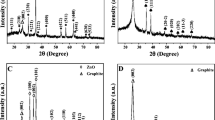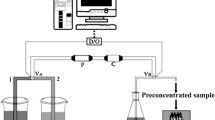Abstract
Context
The interaction between carbon nanostructures and heavy metal clusters is of great interest due to their potential applications as sensors and filters to remove the former from environment. In this work, we investigated the interaction between two types of carbon nanobelts (Möbius-type nanobelt and simple nanobelt) and nickel, cadmium, and lead nanoclusters. Our aim was to determine how both systems interact which would shed light on the potential applications of the carbon nanostructures as pollutant removal and detecting devices.
Methods
To investigate the interaction between carbon nanostructures and heavy metal nanoclusters, we utilized the semiempirical tight binding framework provided by xTB software with the GFN2-xTB Hamiltonian. We performed calculations to determine the best interaction site, lowest energy geometries, complexes stability (using molecular dynamics at 298K), binding energy, and electronic properties. We also carried out a topological study to investigate the nature and intensity of the bonds formed between the metal nanoclusters and the nanobelts. Our results demonstrate that heavy metal nanoclusters have a favorable binding affinity towards both nanobelts, with the Möbius-type nanobelt having a stronger interaction. Additionally, our calculations reveal that the nickel nanocluster has the lowest binding energy, displaying the greatest charge transfer with the nanobelts, which was nearly twice that of the cadmium and lead nanoclusters. Our combined results lead to the conclusion that the nickel nanoclusters are chemisorbed, whereas cadmium and lead nanoclusters are physisorbed in both nanobelts. These findings have significant implications for the development of sensor and filtering devices based on carbon and heavy metal nanoclusters.









Similar content being viewed by others
Data availability
The raw data required to reproduce these findings are available to download from https://doi.org/10.5281/zenodo.7823747.
References
Kumar R, Khan MA, Haq N (2014) Application of carbon nanotubes in heavy metals remediation. Crit. Rev. Env. Sci. Tec. 44:1000–1035. https://doi.org/10.1080/10643389.2012.741314
Hoang AT, Nežiteć Cheng CK, Luque R, Thomas S, Banh TL, Pham VV, Pham XP (2022) Heavy metal removal by biomass-derived carbon nanotubes as a greener environmental remediation: a comprehensive review. Chemosphere 287:131959. https://doi.org/10.1016/j.chemosphere.2021.131959
Singh A, Sharma A, Verma RK, Chopade RL, Pandit PP, Nagar V, Aseri V, Choudhary SK, Awasthi G, Awasthi KK, Sankhla MS (2022) In: Dorta DJ, Oliveira DP (eds.) The toxicity of environmental pollutants. IntechOpen. Chap. Heavy metal contamination of water and their toxic effect on living organisms. https://doi.org/10.5772/intechopen.105075
Kolangare IM, Isloor AM, Inamuddin Asiri AM, Ismail AF (2018) Improved desalination by polyamide membranes containing hydrophilic glutamine and glycine. Environ. Chem. Lett. 17:1053–1059. https://doi.org/10.1007/s10311-018-00825-1
Zwolak A, Sarzyńska M, Szpyrka E, Stawarczyk K (2019) Sources of soil pollution by heavy metals and their accumulation in vegetables: a review. Water, Air, Soil Pollution 230:1–9. https://doi.org/10.1007/s11270-019-4221-y
Mawari G, Kumar N, Sarkar S, Daga MK, Singh MM, Joshi TK, Khan NA (2022) Heavy metal accumulation in fruits and vegetables and human health risk assessment: findings from Maharashtra. India. Environ. Health Insights 16:117863022211191. https://doi.org/10.1177/11786302221119151
Gupta N, Yadav KK, Kumar V, Prasad S, Cabral-Pinto MMS, Jeon B, Kumar S, Abdellattif MH, Alsukaibia AKD (2022) Investigation of heavy metal accumulation in vegetables and health risk to humans from their consumption. Front. Environ. Sci. 10:791052. https://doi.org/10.3389/fenvs.2022.791052
Moreno-Castilla C, Álvarez-Merino MA, López-Ramón MV, Rivera-Utrilla J (2004) Cadmium ion adsorption on different carbon adsorbents from aqueous solutions. Effect of surface chemistry, pore texture, ionic strength, and dissolved natural organic matter. Langmuir 20:8142–8148. https://doi.org/10.1021/la049253m
Tejada-Tovar C, Villabona-Ortíz, A., González-Delgado A (2022) Adsorption study of continuous heavy metal ions (Pb2+, Cd2+, Ni2+) removal using cocoa (Theobroma cacao l.) pod husks. Materials 15, 6937. https://doi.org/10.3390/ma15196937
Engwa GA, Ferdinand PU, Nwalo FN, Unachukwu MN (2019) In: Karcioglu, O., Arslan, B. (eds.) Poisoning in the modern world. IntechOpen. Chap. Mechanism and health effects of heavy metal toxicity in humans. https://doi.org/10.5772/intechopen.82511
Jaishankar M, Tseten T, Anbalagan N, Mathew BB, Beeregowda KN (2014) Toxicity, mechanism and health effects of some heavy metals. Interdiscip. Toxicol. 7:60–72. https://doi.org/10.2478/intox-2014-0009
Baby R, Saifullah B, Hussein MZ (2019) Carbon nanomaterials for the treatment of heavy metal-contaminated water and environmental remediation. Nanoscale Res. Lett. 14:341. https://doi.org/10.1186/s11671-019-3167-8
Hoang AT, Pham XD (2018) An investigation of remediation and recovery of oil spill and toxic heavy metal from maritime pollution by a new absorbent material. J. Mar. Eng. Technol. 20:159–169. https://doi.org/10.1080/20464177.2018.1544401
Schuler MS, Relyea RA (2018) A review of the combined threats of road salts and heavy metals to freshwater systems. BioScience 68:327–335. https://doi.org/10.1093/biosci/biy018
Bayuo, J., Rwiza, M.J., Sillanpaä, M., Mtei, KM (2023) Removal of heavy metals from binary and multicomponent adsorption systems using various adsorbents – a systematic review. RSC Adv. 13, 13052–13093. https://doi.org/10.1039/D3RA01660A
Arora B, Attri P (2020) Carbon nanotubes (CNTs): a potential nanomaterial for water purification. J. Compos. Sci. 4:135. https://doi.org/10.3390/jcs4030135
Moallaei H, Bouchara J-P, Rad A, Singh P, Raizada P, Tran HN, Zafar MN, Giannakoudakis DA, Hosseini-Bandegharaei A (2020) Application of fusarium sp. Immobilized on multi-walled carbon nanotubes for solid-phase extraction and trace analysis of heavy metal cations. Food Chem. 322, 126757. https://doi.org/10.1016/j.foodchem.2020.126757
Ganzoury MA, Chidiac C, Kurtz J, de Lannoy C-F (2020) CNT-sorbents for heavy metals: electrochemical regeneration and closed-loop recycling. J. Hazard. Mater. 393 https://doi.org/10.1016/j.jhazmat.2020.122432
Oliveira AR, Correia AA, Rasteiro MG (2021) Heavy metals removal from aqueous solutions by multiwall carbon nanotubes: effect of MWCNTs dispersion. Nanomaterials 11:2082. https://doi.org/10.3390/nano11082082
Rodríguez C, Briano S, Leiva E (2020) Increased adsorption of heavy metal ions in multi-walled carbon nanotubes with improved dispersion stability. Molecules 25:3106. https://doi.org/10.3390/molecules25143106
Murjani BO, Kadu PS, Bansod M, Vaidya SS, Yadav MD (2022) Carbon nanotubes in biomedical applications: current status, promises, and challenges. Carbon Lett. 32:1207–1226. https://doi.org/10.1007/s42823-022-00364-4
Segawa Povie G, YNishihara T, Miyauchi Y, Itami K, (2017) Synthesis of a carbon nanobelt. Science 356:172–175. https://doi.org/10.1126/science.aam8158
Nishigaki S, Shibata Y, Nakajima A, Okajima H, Masumoto Y, Osawa T, Muranaka A, Sugiyama H, Horikawa A, Uekusa H, Koshino H, Uchiyama M, Sakamoto A, Tanaka K (2019) Synthesis of belt- and Möbius-shaped cycloparaphenylenes by rhodium-catalyzed alkyne cyclotrimerization. J. Am. Chem. Soc. 141:14955–14960. https://doi.org/10.1021/jacs.9b06197
Zhang Q, Zhang Y-E, Tong S, Wang M-X (2020) Hydrocarbon belts with truncated cone structures. J. Am. Chem. Soc. 142:1196–1199. https://doi.org/10.1021/jacs.9b12181
Li N, Zhang L, Lu C, Sun Y, Wang J (2022) Physical mechanism of spectra in carbon nanobelts under quantum size effect. Nanomaterials 13:159. https://doi.org/10.3390/nano13010159
Seenithurai S, Chai J-D (2021) Electronic properties of carbon nanobelts predicted by thermally-assisted-occupation DFT. Nanomaterials 11:2224. https://doi.org/10.3390/nano11092224
Starostin EL, van der Heijden GHM (2007) The shape of a Möbius strip. Nat. Mater. 6:563–567. https://doi.org/10.1038/nmat1929
Cartwright JHE, González DL (2016) Möbius strips before Möbius: topological hints in ancient representations. Math Intell 38(2):69–76. https://doi.org/10.1007/s00283-016-9631-8
Ajami D, Hess K, Köhler F, Náther C, Oeckler O, Simon A, Yamamoto C, Okamoto Y, Herges R (2006) Synthesis and properties of the first Möbius annulenes. Chem - Eur J 12:5434–5445. https://doi.org/10.1002/chem.200600215
Ajami D, Oeckler O, Simon A, Herges R (2003) Synthesis of a Möbius aromatic hydrocarbon. Nature 426:819–821. https://doi.org/10.1038/nature02224
Tanda S, Tsuneta T, Okajima Y, Inagaki K, Yamaya K, Hatakenaka N (2002) A Möbius strip of single crystals. Nature 417(6887):397–398. https://doi.org/10.1038/417397a
Herges R (2006) Topology in chemistry: designing Moöbius molecules. Chem Rev 106:4820–4842
Jiao Y, Lv X, Zhang Y, Li C, Li J, Wu H, Xiao Y, Wu S, Hu Y, Wu D, Chu J (2019) Pitcher plant-bioinspired bubble slippery surface fabricated by femtosecond laser for buoyancy-driven bubble self-transport and efficient gas capture. Nanoscale 11:1370–1378. https://doi.org/10.1039/c8nr09348b
Nie Z-Z, Zuo B, Wang M, Huang S, Chen X-M, Liu Z-Y, Yang H (2021) Lightdriven continuous rotating Möbius strip actuators. Nat Commun 12:22644. https://doi.org/10.1038/s41467-021-22644-9
Segawa Y, Watanabe T, Yamanoue K, Kuwayama M, Watanabe K, Pirillo J, Hijikata Y, Itami K (2022) Synthesis of a Möbius carbon nanobelt. Nature Synthesis 1:535–541. https://doi.org/10.1038/s44160-022-00075-8
Wu C, Liu W, Cheng Li K, G, Xiong J, Teng T, Che C-M, Yang C, (2020) Face-to-face orientation of quasiplanar donor and acceptor enables highly efficient intramolecular exciplex fluorescence. Angew Chem Int Ed 60:3994–3998. https://doi.org/10.1002/anie.202013051
Li W, Du C-Z, Chen X-Y, Fu L, Gao R-R, Yao Z-F, Wang J-Y, Hu W, Pei J, Wang X-Y (2022) BN-anthracene for high-mobility organic optoelectronic materials through periphery engineering. Angew. Chem. Int. Ed. 61:01464. https://doi.org/10.1002/anie.202201464
Li R, Zhang Y, Xu X, Zhou Y, Chen M, Sun M (2018) Optical characterizations of two-dimensional materials using nonlinear optical microscopies of CARS, TPEF, and SHG. Nanophotonics 7:873–881. https://doi.org/10.1515/nanoph-2018-0002
Westerhoff P, Alvarez P, Li Q, Gardea-Torresdey J, Zimmerman J (2016) Overcoming implementation barriers for nanotechnology in drinking water treatment. Environ Sci Nano 3:1241–1253. https://doi.org/10.1039/c6en00183a
Wu Y, Pang H, Liu Y, Wang X, Yu S, Fu D, Chen J, Wang X (2019) Environmental remediation of heavy metal ions by novel-nanomaterials: a review. Environ Pollut 246:608–620. https://doi.org/10.1016/j.envpol.2018.12.076
Aguiar C, Dattani N, Camps I (2023) Möbius carbon nanobelts interacting with heavy metal nanoclusters. arXiv. https://doi.org/10.48550/arXiv.2304.07368
Virtual NanoLab - Atomistix ToolKit. QuantumWise. v2017.1 (2017)
Bannwarth C, Caldeweyher E, Ehlert S, Hansen A, Pracht P, Seibert J, Spicher S, Grimme S (2020) Extended tight-binding quantum chemistry methods. WIREs Comput Mol Sci 11:1493. https://doi.org/10.1002/wcms.1493
Grimme S, Bannwarth C, Shushkov P (2017) A robust and accurate tight-binding quantum chemical method for structures, vibrational frequencies, and noncovalent interactions of large molecular systems parametrized for all spd-block elements (Z=1-86). J. Chem. Theory Comput. 13:1989–2009. https://doi.org/10.1021/acs.jctc.7b00118
Plett C, Grimme S (2022) Automated and efficient generation of general molecular aggregate structures. Angew. Chem Int Ed 62. https://doi.org/10.1002/anie.202214477
Grimme S, Bannwarth C, Caldeweyher E, Pisarek J, Hansen A (2017) A general intermolecular force field based on tight-binding quantum chemical calculations. J Chem Phys 147:161708. https://doi.org/10.1063/1.4991798
Camps I (2023) Methods used in nanostructure modeling. https://doi.org/10.48550/arXiv.2303.01226
Marenich AV, Jerome SV, Cramer CJ, Truhlar DG (2012) Charge Model 5: an extension of Hirshfeld population analysis for the accurate description of molecular interactions in gaseous and condensed phases. Journal of Chemical Theory and Computation 8:527–541. https://doi.org/10.1021/ct200866d
Lu T, Chen F (2012) Multiwfn: a multifunctional wavefunction analyzer. J Comput Chem 33:580–592. https://doi.org/10.1002/jcc.22885
Jmol: an open-source Java viewer for chemical structures in 3D. http://www.jmol.org/
Everett DH (2001) Manual on definitions, terminology and symbols in colloid and surface chemistry. Pure Appl Chem 31(4):577–638. https://doi.org/10.1351/pac197231040577
Bader RFW (1994) Atoms in molecules: a quantum theory. Clarendon Press, Oxford, International series of monographs on chemistry
Aguiar C, Dattani N, Camps I (2023) (VIDEOS) Möbius carbon nanobelts interacting with heavy metal nanoclusters. Zenodo. https://doi.org/10.5281/zenodo.8132841
Aguiar C, Dattani N, Camps I , Möbius boron-nitride nanobelts interacting with heavy metal nanoclusters. https://doi.org/10.48550/arXiv.2302.11697
Humphrey W, Dalke A, Schulten K (1996) VMD: visual molecular dynamics. J Mol Graph 14:33–38. https://doi.org/10.1016/0263-7855(96)00018-5
Becke AD, Edgecombe KE (1990) A simple measure of electron localization in atomic and molecular systems. The J Chem Phys 92:5397–5403. https://doi.org/10.1063/1.458517
Koumpouras K, Larsson JA (2020) Distinguishing between chemical bonding and physical binding using electron localization function (ELF). J Phys Condens Matter 32:315502. https://doi.org/10.1088/1361-648X/ab7fd8
Schmider HL, Becke AD (2000) Chemical content of the kinetic energy density. J Mol Struct THEOCHEM 527:51–61. https://doi.org/10.1016/S0166-1280(00)00477-2
Acknowledgements
We would like to acknowledge financial support from the Brazilian agencies CNPq, CAPES and FAPEMIG. Part of the results presented here were developed with the help of a CENAPAD-SP (Centro Nacional de Processamento de Alto Desempenho em São Paulo) grant UNICAMP/FINEP–MCT, CENAPAD–UFC (Centro Nacional de Processamento de Alto Desempenho, at Universidade Federal do Ceará, and Digital Research Alliance of Canada (via project bmh-491-09 belonging to Dr. Nike Dattani), for the computational support.
Author information
Authors and Affiliations
Contributions
C. Aguiar: investigation, formal analysis, writing—original draft, writing—review and editing. N. Dattani: investigation, resources, formal analysis, writing—original draft, writing—review and editing. I. Camps: conceptualization, methodology, software, formal analysis, resources, writing—review and editing, supervision, project administration.
Corresponding authors
Ethics declarations
Conflict of interest
The authors declare no competing interests.
Additional information
Publisher's Note
Springer Nature remains neutral with regard to jurisdictional claims in published maps and institutional affiliations.
Rights and permissions
Springer Nature or its licensor (e.g. a society or other partner) holds exclusive rights to this article under a publishing agreement with the author(s) or other rightsholder(s); author self-archiving of the accepted manuscript version of this article is solely governed by the terms of such publishing agreement and applicable law.
About this article
Cite this article
Aguiar, C., Dattani, N. & Camps, I. Möbius carbon nanobelts interacting with heavy metal nanoclusters. J Mol Model 29, 277 (2023). https://doi.org/10.1007/s00894-023-05669-3
Received:
Accepted:
Published:
DOI: https://doi.org/10.1007/s00894-023-05669-3




